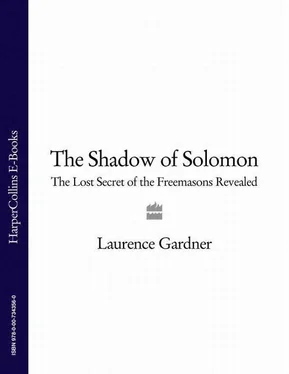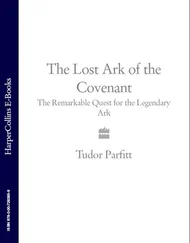In part of the text the stones are referred to as ‘pylers’, and this has generally been assumed to relate to ‘pillars’. The same definition was also given in a 19th-century English translation from the 1st-century work of Flavius Josephus of Galilee, who had related a version of the same story in his Antiquities of the Jews. 6The translation from Josephus has been criticized by scholars because of its many inaccuracies, among which are the use of ‘brick’ and ‘stone’ for the Hebrew words equivalent to marbyll and latres. Similarly, the word ‘pillar’ was wholly misleading and led to the illusion of two great columns which appeared to have no geographical location. Given that Lamech and his sons lived before the biblical Flood, the stones became known as the Antediluvian Pillars.
In fact, there are two very distinct words used in old Hebrew, each of which has been translated to ‘pillar’ in the English version of the Old Testament— ammud and mazzebah. 7The first denotes a pillar such as a column in architecture or a column of smoke, but the second has a rather different connotation. It might refer to a stela or altar stone, but was equally applied to the stone that Jacob used for a pillow (pyler) and established as a mazzebah at Beth-el (Genesis 28:18). The antediluvian stones of the Matthew Cooke Manuscript were therefore correctly designated (before the translatory errors) as mazzebah stones of marbyll and latres. The former might perhaps have been marble or some crystalline rock, while the other was corrupted in some writings to ‘laterus’ and then reckoned to be ‘laterite’ (a red iron-based clay used for bricks and road surfaces). The fact is that the nature of latres is obscure, although early masonic tradition pre sumes it to have been a type of metal. 8
The Seven Liberal Arts ( artes liberales ) were branches of knowledge taught in medieval schools, and they were so named from the Latin liber meaning ‘free’. 9(This is another possible derivation of the prefix ‘ free -’ in Freemason, but again it is not the definitive source of the term as will become clear when we return to the subject in chapter 7.) The Liberal Arts were not so much taught as a means of preparing students to gain a livelihood, but to increase their awareness in the philosophical sciences. They were individually defined in 819 by the Benedictine scholar, Rabanus Maurus, Archbishop of Mayence (Mainz) and Abbé of Fulda, the greatest seat of learning in the Frankish Empire in the days of Charlemagne. Rabanus was renowned as the most learned sage of the era, and it was said that he had no equal in matters of scriptural knowledge, canon law and liturgy. 10Among the most renowned works of Rabanus was his richly illuminated Life of Mary Magdalene. 11
The Liberal Arts were, in effect, perceived as routes towards personal enlightenment in the finer things that were the keys to harmony and justice. In the 2nd degree of Craft masonry (the Fellow Craft degree), it is explained to the candidate that there are seven levels to the winding staircase that leads to the middle chamber of Solomon’s Temple. They are important aspects of the journey to wisdom, and allude (among other things) to the Seven Liberal Arts. They are the abstracts of truth and, as Plato claimed, the steps of the universal whole. The painting Allegory of the Liberal Arts by the Italian artist Biagio d’Antonio (c. 1445-1510), shows the seven levels (reminiscent in concept to Blake’s Jacob’s Ladder), with scholars and philosophers receiving instruction in the respective Arts at each level, at the base of which is the Gate of Wisdom (see plate 3).
The Matthew Cooke Manuscript continues with the story of Noah and relates that after the Flood the marbyll and latres stones were found by Hermes and the Greek philosopher Pythagoras. In historical terms, this makes little sense given the enormous time span (around 3,000 years) between Noah and Pythagoras. However, the manuscript was produced in about 1450—two centuries before Archbishop Ussher of Armagh compiled the first biblical chronology, and many such date anomalies are discovered in documents of the era. But this does not excuse the naive manner in which the story is recounted verbatim today.
Other versions of the account separate the Hermes and Pythagorean involvements. They explain that, in the first instance, Hermes Trismegistus (Hermes the Thrice Great)—revered as the founder of alchemy and geometry, and from whose name the definition ‘hermetic’ derives—transcribed the stones’ content onto an emerald tablet. Then, in time, the emerald text of Hermes was inherited by Pythagoras.
The extent of truth in the story of Lamech’s offspring is unknown, but Apollonius of Tyana, from the Temple of Asklepios in Aegae, is said to have discovered the emerald text in the 1st century. From that time, many notable philosophers have studied and made use of his transcription. Extant part-translations date from the 700s, beginning with that of the Islamic philosopher Jãbir Ibn Hayyãn, who also wrote of the alchemical School of Pythagoras (the Ta’ifat Fthaghurus ). Prominent among later students of the Emerald Tablet was Sir Isaac Newton. He was so entrenched in the research of ancient hermetic writings that, in a Royal Society lecture by Lord Keynes in 1942, he was referred to as ‘the last of the magicians; the last of the Babylonians and Sumerians’. 12Unfortunately, Newton did not have the benefit of the thousands of Mesopotamian tablets discovered since his lifetime, so his efforts to produce a reliable chronology of events were substantially hampered.
Newton also translated the Corpus Hermeticum (attributed to Hermes Trismegistus), from the Florentine collection of Cosimo de Medici, and was especially interested in a unified theory of the law of the Universe (the prisca sapienta ), which he referred to as the Frame of Nature. With Hermes’ maxim ‘as above, so below’ at its heart, it denotes that the harmony of earthly proportion is representative of its universal equivalent. In other words, that earthly proportion is the mundane image of cosmological structure. From the smallest cell to the widest expanse of the galaxies, a repetitive geometric law prevails, and this was understood from the very earliest of recorded times.
Following the ‘Wisdom of Lamech’ theme, the Matthew Cooke Manuscript moves to the geometry of Euclid, although confusing his lifetime with that of Abraham some 1,700 years before. It explains how geometry and masonry were synonymous crafts in ancient Egypt, and makes the point that these crafts were learned by the Israelites during their 400-year sojourn in the Nile Delta before travelling with Moses to the promised Holy Land ( c. 1360 BC). Subsequently, the crafts flourished in Phoenicia and Judah, leading to their inheritance by King Solomon and his artificer Hiram, sent to Jerusalem by the King of Tyre.
At this point in the Matthew Cooke text, there is a dramatic leap in historical context and, in the same paragraph that relates to Solomon, it is stated: ‘And from thence this worthy science was brought to France.’ The account continues with the notion that Charles II of France ( c. 885) was a mason before he became king. Then, flitting back in time, we are in England with the 3rd-century St Alban, followed (as in the Regius Manuscript ) by the 10th-century King Athelstan and his council of stonemasons!
In all of this, the Matthew Cooke Manuscript centres on the fact that the precepts of masonry were first cemented when 40,000 masons were employed to build the Tower of Babel in Shinar (historically, the great ziggurat of Babylon in Mesopotamia). The masonic Charges, it states, were formulated by King Nimrod of Babel—the mighty hunter of Genesis 10:8-10—when he sent 3,000 masons to build the city of Nineveh in Assyria (northern Mesopotamia). Again there is a major date anomaly here since there were more than 2,000 years between Nimrod and the building of Nineveh.
Читать дальше












